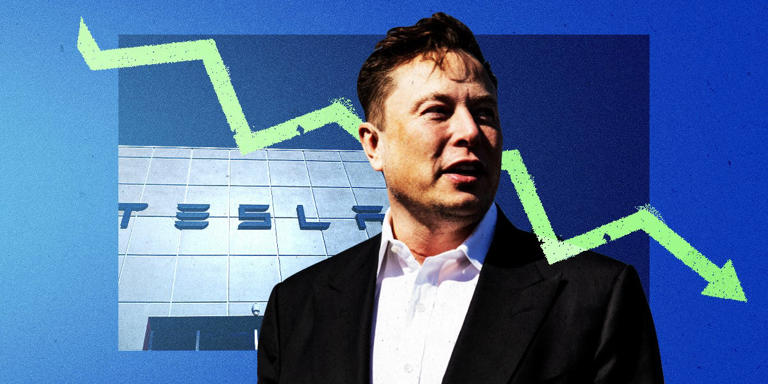Tesla’s journey through the first half of 2024 has been fraught with challenges, presenting a rocky landscape for the electric vehicle (EV) giant. The company has faced multiple hurdles, including significant layoffs, high-profile executive departures, and a series of recalls impacting its flagship Cybertruck model. Additionally, Tesla reported a concerning trend of declining car sales across two consecutive quarters. This downturn in sales has been particularly alarming for investors, contributing to a sharp decline in Tesla’s stock value, which was down over 40% year-to-date by April. Despite these setbacks, Tesla’s stock has shown some recovery in recent months.
The situation was further complicated by Tesla’s second-quarter earnings report, which fell short of Wall Street’s expectations. The company’s earnings per share did not meet analysts’ forecasts, and Tesla’s announcement of a further delay in the unveiling of its highly anticipated Robotaxi only added to the market’s unease. This disappointing news led to a nearly 8% drop in Tesla’s stock price in after-hours trading, reflecting heightened investor concern.
Despite the current turbulence, a number of analysts remain optimistic about Tesla’s future prospects. Gene Munster, managing partner at Deepwater Asset Management, is one of those who maintains a positive outlook. Munster believes that, while Tesla might not meet all its projected milestones on time, the company’s groundbreaking innovations in automation, self-driving technology, and its development of the Optimus humanoid robot position it uniquely within the automotive and technology sectors. He argues that Tesla’s potential for long-term success remains strong, suggesting that it could achieve valuations comparable to those of other major tech giants, despite the current difficulties.
Tasha Keeney, a director at ARK Invest, echoes this optimism, particularly regarding the Robotaxi initiative. Keeney views the development of Robotaxis as a pivotal move into the realm of artificial intelligence, which could significantly enhance Tesla’s enterprise value. She argues that, despite the current focus on the delays and challenges, the long-term value of Robotaxis could be substantial, potentially contributing to over 90% of Tesla’s enterprise value in the next five years.
In addition to these perspectives, some analysts see positive signs in Tesla’s recent pricing strategies. Daniel Ives of Wedbush notes that the company’s recent price hikes, following a period of price cuts, could indicate a stabilization in its market strategy. This adjustment might signal resilience and an ability to navigate the market’s fluctuations, suggesting that Tesla is on a path to recovery.
However, not all viewpoints are uniformly positive. Ron Jewsikow of Guggenheim expresses skepticism about the Robotaxi project, particularly regarding its competitive edge. Jewsikow questions whether Robotaxis will be able to attract customers if they are priced higher than alternatives, such as self-driving services offered by competitors like Apollo in China. He highlights the potential risk that if Robotaxis are significantly more expensive, they might struggle to gain traction in the market.
Overall, Tesla’s current challenges are significant, but the company’s long-term potential continues to attract a portion of the investment community. Analysts who are optimistic about Tesla’s future point to its innovative capabilities and strategic projects as key factors that could drive future success. While the company navigates its immediate issues, these experts believe that Tesla’s unique position in the technology and automotive sectors provides a foundation for recovery and growth in the long run.
